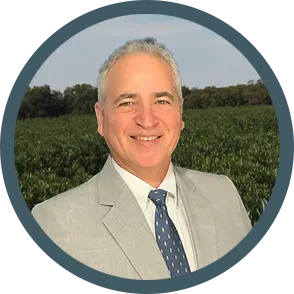Our Story
It is our objective that representatives will be proud to be our partners and will be motivated by the fact that our product is the best available.

The oleander has a long history of cultivation amongst Mediterranean cultures. Some scholars believe the Rose of Jericho mentioned in Ecclesiastes is the oleander. Oleander is featured in paintings from some of the only surviving murals in Pompeii.
The plant was also revered by Greeks to honor their gods; the Moors for the sounds created by wind whipping its branches. Van Gogh’s painting, the cover illustration for this pamphlet, done in 1888, features oleander because he believed it had life-affirming flowers that bloomed exhaustively. This corresponds with the medical applications that Phoenix Biotechnology, Inc. (PBI) believes this plant provides.
Thomas Jefferson had a well-known interest in exotic flora, and friends around the world sent him
many and varied plants, including oleanders, for his Monticello garden. He was so enchanted by the oleander and its flowers that he planted them throughout that famous garden.
Oleanders first arrived on this continent in bulk when a ship carrying them docked in 1841 at the important Texas port of Galveston. After the devastating 1900 hurricane which hit Galveston and took 9,000 lives, it earned the name “The Oleander City” because oleanders were the first plants to bloom after the hurricane. Today, Galveston is home to the most extensive collection of oleanders in the world. Certainly, the plant has established an identity for itself as hardy, prolific and beautiful.
Since humans first encountered the oleander, it has been seen as having extremely useful medical properties. Pliny the Elder, in volume XVI Chapter 79 of his book of natural history, mentions that oleander is toxic to animals, but for people it is an antidote against the poisons of snakes. Extracts of the plant have been used as teas to settle upset stomach conditions and to treat ringworm, malaria, leprosy, indigestion, venereal disease, fevers and heart failure. Bedouins used it to treat cancer and the Babylonians concocted a combination of licorice and oleander to relieve hangovers. It is still used around the world as an ingredient in folk remedies.
Despite, oleander’s tantalizing medical properties and ornamental beauty, it comes with a warning to those intending to exploit its medical benefits. The plant itself is toxic. It can produce vomiting, heart arrythmia, a skin rash and diarrhea. Rarely does it cause human death unless ingested in large quantities.
The answer to this problem, which was first addressed by the earliest practitioners, was to limit the amount of extract in the dosage to ensure the desired outcome for the user. Water or plant oil was used to dilute the plant extract to a suitable level for application either superficially or internally. The modern user of Nerium oleander benefits from vastly better systems of extraction and the science to measure with precision the amount of Oleandrin – the active ingredient of the oleander plant -- in each application to ensure no harmful outcome to the patient.
We can now appreciate the oleander bush or tree as a unique TRIPARTITE PLANT.
For 17 years they have followed a plan to focus all their research efforts on Nerium oleander. From the earliest days of research, it has given tantalizing evidence that it could not only be a possible treatment for cancer but also for a chorus of other medical maladies. What has been accomplished today through tireless effort has been validation of the efficacy of PBI’s Oleandrin-based product as a Novel, Platform botanical drug with extraordinary potential for the treatment of deadly viruses, cancers, stroke and neurodegenerative diseases.
As the founders and researchers pursued every possible medical application of the derivatives of this wonder bush, they properly protected their discoveries with patent protection through the brilliant guidance of Rick Matos, PhD. Currently more than 140 patents and applications protect the company’s intellectual property. While PBI’s early years may have been influenced by equal parts serendipity and supposition, the business model adopted by its founders has been both wise and atypical. The mission they developed for PBI was to deliver medical solutions with minimal or no side effects for diseases which have limited, if any, treatment options -- and at an affordable cost to patients.
To learn more about Phoenix Biotechnology research click here. LEARN MORE
To learn more about Phoenix Biotechnology research click below.
THE SCIENCE BEHIND OLEANDER EXTRACT
Phoenix Biotechnology, Inc., has been exploring the health-related benefits of novel extracts and specific components of Nerium oleander for the past 20 years. This research has been spear headed by Dr. Robert Newman who is dedicated to “evidence-based” proof of product performance and efficacy. Studies have been conducted on the difference Nerium oleander extraction processes and different dose strengths. These results have been favorable and address many areas of concern to include the appearance of aging, psoriasis, cold sore, inflammation, pain, general wellness, SARS, cancer, neurogenerative disease, antiviral and many more studies have been conducted.

BEHIND THE RESEARCH
Dr. Robert Newman
Phoenix Biotechnology’s Chief Science Officer, Chairman of the Scientific Advisory Board, and Director. Dr. Newman obtained his M.S. and Ph.D. degrees in Pharmacology and Toxicology from the University of Connecticut and then served in postdoctoral positions at the Medical School of the University of Georgia as well as the Department of Biochemistry at the University of Vermont. He served as a faculty member at the University of Vermont Medical School for seven years and then spent a sabbatical year at Stanford University performing research on immune targeted therapy. He spent 24 years at the University of Texas M. D. Anderson Cancer Center (MDACC) in Houston, Texas where he held the D. B. Lane Distinguished Professorship Chair. At MDACC he served as the founder and Co-Director of the Pharmaceutical Development Center and the institution's Analytical Center.

Dr. Rick Matos
Phoenix Biotechnology’s Director. Dr. Matos has 32 years of experience as a pharmaceutical researcher, patent practitioner and consultant. He is an author of scientific articles and an inventor of pharmaceutical and chemical process technologies. He has integrated IP, business, R&D, regulatory, and commercialization strategies and built and managing robust large patent portfolios. Dr. Matos earned his doctorate in Bioorganic Chemistry from Texas A&M University after having completed his studies on the chemical and enzymatic synthesis of penicillin, amino acids and other natural products. He worked for The DuPont Merck Pharmaceutical Company as a Senior Research Scientist primarily on biotech large-scale process development and drug discovery in many therapeutic areas while advancing to Project Team Leader within the R&D department. After helping establish the pharmaceutical IP practice in the Dallas office of a major firm, Dr. Matos founded Innovar, L.L.C. in March of 2000.
